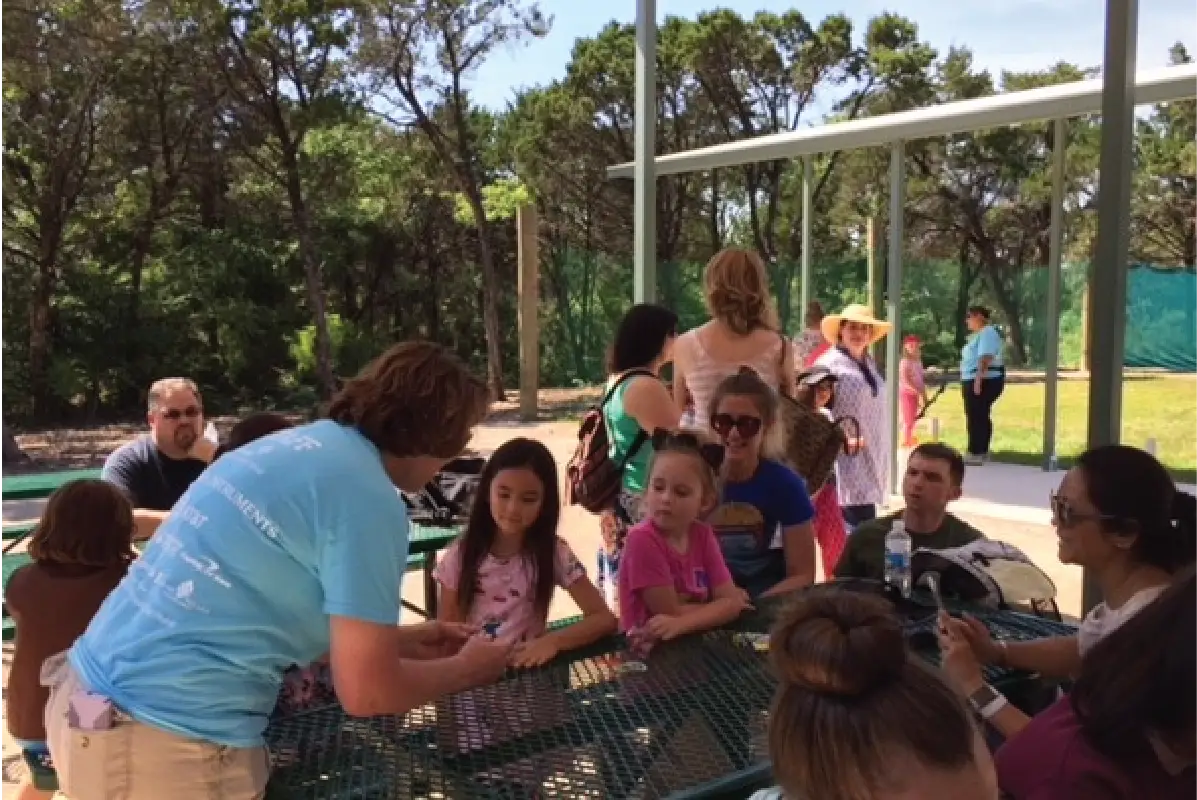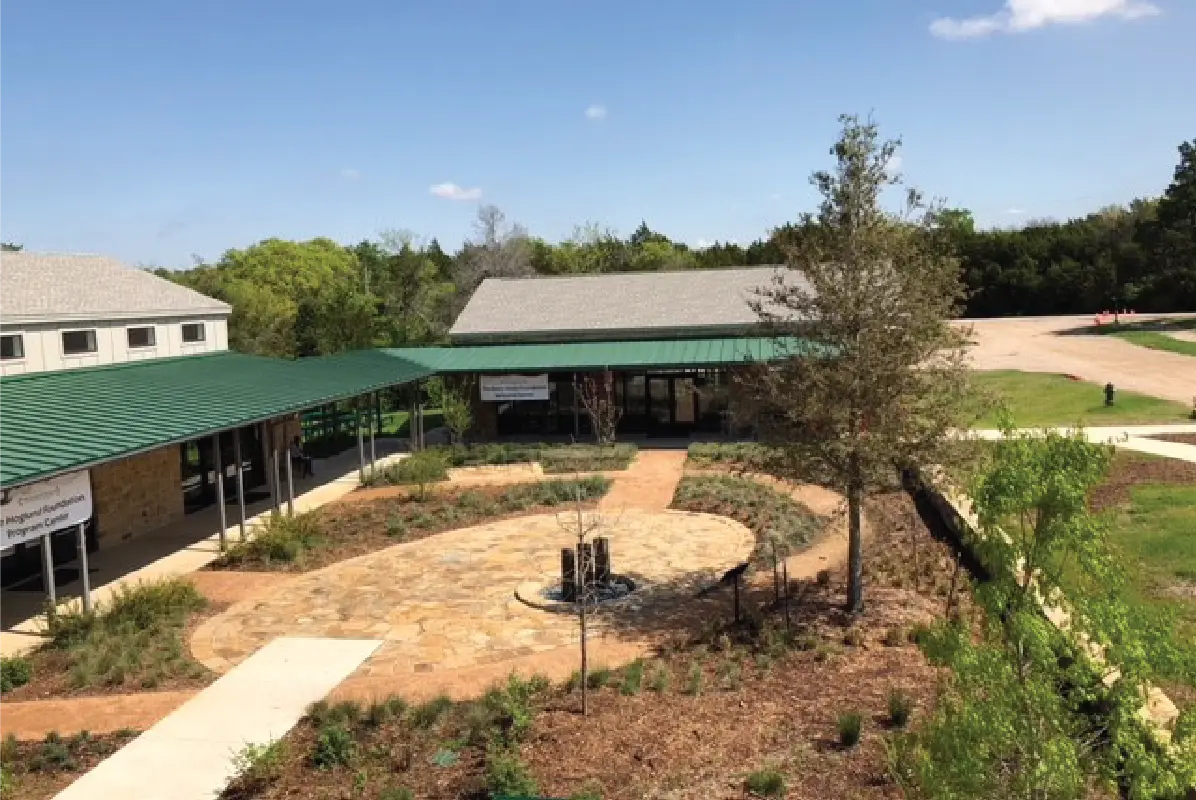For today’s blog post, I spoke with Jennifer Bartkowski, the CEO of Girl Scouts of Northeast Texas. I have to admit, I didn’t participate in Girl Scouts as a child, and my two daughters aren’t old enough yet to join. So my personal knowledge of Girl Scouts is limited to cookie sales. But I know intuitively that Girl Scouts is about so much more than cookie sales. What I didn’t know was just how much they’re focused on understanding how girls learn and lead, and using that knowledge to help girls succeed.
Here are some snippets from my conversation with Jennifer.
Tell me just a brief synopsis of Girl Scouts.
Girl Scouts is a 106-year-old girl-only organization, and has been focused on developing girls’ leadership abilities for more than a century. The founder, Juliette Gordon Low, wanted to create an opportunity for girls to get into the open air, interact with the environment, get involved in their communities, and care about what was happening around them. They were the first organization to do that in the United States. Fast forward to now, and girls need Girl Scouts as much as they ever did, even before women didn’t have the right to vote. Girls are facing different issues today and need access to opportunities to prepare them for things like STEM [Science, Technology, Engineering and Math], healthy relationships, how to manage conflict, building their confidence in the workforce, and the outdoor leadership experience. But what has remained consistent is that we know how girls learn and lead.
Tell me more about that.
A girl spends 99% of her time in a co-ed environment. But Girl Scouts is a girl-led environment. When a girl joins Girl Scouts, she is able to build her confidence, take risks, relax, be smart without caring what others think and be in a space that fosters curiosity and independence without distraction. In Girl Scouts, girls are making decisions and collaborating with others. We know from research that this is how girls learn best.
What are the main priorities of Girl Scouts?
The number one thing is to build confidence and a strong sense of self. We have research that shows that 90% of girls believe that anyone can be a leader, but only 2 out of 10 girls believe they have what it takes. There’s a huge confidence gap among girls, and we have to fill that gap.
We build confidence through healthy risk-taking. Girls learn to be comfortable with setting goals, embracing challenges, and with failure. Girls are conditioned to be perfect, not to raise their hand until they know the answer. We need to teach them that they can fail – that we all fail at times – and the important skills of resilience, persistence and grit.
Then, we talk about applying these learnings to workforce development. Not every girl is going to be a CEO of a corporation, but every girl is the CEO of her life. She needs the confidence to pursue her dreams. There are many positive values that women bring to the workforce, among them collaboration, empathy, teamwork, and concern for others. These are skills that we foster in Girl Scouts as well. We focus on leadership, healthy relationships, teamwork and community problem solving.
There are four key areas that we focus on – these are areas where girls need skills that they aren’t likely to be pursuing on their own. Of course, one is STEM. Women are under-represented in STEM fields, and we aren’t currently making enough progress in that area. Another is life skills, things like practical skills, financial literacy, and healthy relationships. Another is entrepreneurship. The largest entrepreneurship program in the world is the Girl Scout cookie program and for six weeks per year, more than 16,000 of our girls own their own business, a program designed for and led by girls. Finally, outdoor leadership. Kids today spend so much time indoors, and we work to help them get outside and explore – taking on new challenges and adventure.

For the readers like me who aren’t super familiar with Girl Scouts, can you share a little more about the program as a whole? What ages participate? What steps are involved?
Sure. Girl Scouts runs from Kindergarten through 12th grade. In Kindergarten and first grade, a girl is a Daisy. Then she advances to a Brownie, then a Junior. Between 6th and 8th grade, she is a Cadet, then a Senior, and finally in the last two years of high school, she is an Ambassador. In 4th and 5th grades, girls participate in the Bronze Award, which is where girls identify a problem in the community and come up with a sustainable solution. At the completion of Girl Scouts, girls can earn the Gold Award, which is the highest award a Girl Scout can achieve, similar to the Boy Scout Eagle Scout award. Last year our council presented 142 Gold Award Girl Scouts with the prestigious Gold Award.
In Kindergarten through fifth grade, the program is mostly exploratory. Girls work on leadership and confidence building. In middle school and high school, it becomes more immersive and more external. Girls go out into the workforce and the community. They participate in camps and workshops. And they also run their own business for 6 weeks. You’re probably familiar with that one: the Girl Scout Cookie Program – where girls learn business ethics, money management, marketing and interpersonal skills.
Can you tell me a little bit about your new STEM Center for Excellence?
We are so excited that we have opened a brand new STEM Center of Excellence in southern Dallas. This center is on 92 acres of property and functions as a living laboratory for opportunities in robotics, coding, botany, chemistry and more. What makes this space unique is that we have brought our expertise in girls and collaborated with STEM experts in the community as well as STEM professionals to provide a comprehensive STEM experience for girls that is delivered in the context of leadership development. We are the largest girl-serving organization in the country, and the largest pipeline for future female leaders. We are partnering with others to provide STEM programming, and they’re helping make STEM come alive. It’s a true collaboration, using what we know about girls and what our partners know about STEM to give girls the opportunity to discover and take action.

You mentioned the Bronze Award and the Gold Award. Can you give me some examples of projects that girls have done to earn those awards?
There are so many! One young girl saw that there were issues with girls advancing through STEM programming, so she created her own STEM program, went into elementary schools in her area and implemented it. Another, struck by gender disparity in robotics, created a girls robotics club. She was required to do 80 hours of work to earn her award, and in the end, she passed the material off to the school to continue implementing it. Part of the award is that the solution is sustainable and can continue beyond the immediate involvement of the student earning the award.
Another girl discovered that her local fire department didn’t have the right equipment to save pets from fires, so she raised money, purchased the equipment, and trained the fire fighters on how to use it.
Another girl found that kids in a nearby apartment building didn’t know how to swim, even though they had a pool in the complex. She taught them how to swim and also trained others to continue after she left.
One that I’m so proud of is how our girls stepped up in the wake of Hurricane Harvey. Our council created a patch and thousands of Girl Scouts troops stepped up and responded. [You can read more about that here.]
One final question for you. I think I know how you’ll respond, but I am curious to know why you think it is important that Girl Scouts is just for girls. Why does that matter?
I believe there is a great value to all-girl environments because girls need a space of their own to truly build their confidence and develop their sense of self. Girl Scouts provides one place where girls can explore risk taking and opportunities do things they can’t do anywhere else. As I said before, girls need Girl Scouts as much now as at any other point in our 106-year history. The world deserves a really strong girl leadership organization.
Share with
Related Resources